| Рубрикатор |  |
 |
| Все новости |  |
World News |  |
 |
As Going Gets Tough, Nokia Brings Out Legal Guns
| 22 декабря 2009 |
When Nokia, the world’s largest mobile phone maker, sued Apple, Samsung, LG and eight other competitors within six weeks beginning in October, the Finnish technology giant said it was conducting a routine defense of its intellectual property.
But for cellphone makers and suppliers accustomed to swapping valuable technologies, the suits filed by Nokia were far from standard.
Like many cellphone makers, Nokia is fighting the economic downturn. The company has laid off thousands of employees this year to counter falling sales and profit and its slipping share of the global market, which fell to 35 percent in the third quarter from 41 percent in the second.
Bill Tai, a partner in Charles River Ventures, said the new legal aggressiveness was “a natural evolution” similar to that which took place in the semiconductor and desktop computer businesses during difficult or competitive times.
“As competition has intensified and margins have deteriorated, companies are trying to put up barriers to protect their positions,” said Mr. Tai, whose firm has invested about $2 billion in technology start-ups since 1970.
The mobile industry, since its inception, has been a legal battleground. In 2008, Nokia settled a suit with Qualcomm, a U.S. maker of mobile phone chips, and agreed to pay an estimated $400 million a year for Qualcomm patents over 15 years. According to their most recent financial reports, nearly all cellphone makers are suing or being sued.
Research In Motion, the maker of the BlackBerry, is suing Motorola for using 20 of its patents; Motorola has countersued. Palm is being sued by a patent licensing company in Tyler, Texas, called Saxon Innovations over a third-party application processor. Apple in March won a ruling in Japan against Shigeru Saito Architecture Institute, which had sued over touch-screen patents.
Nokia is fighting 12 suits from IPCom, a German patent holding company that bought the mobile portfolio of Robert Bosch, which includes 160 essential mobile patents.
“Nokia has been very active of late, and in general, there has been an increase in litigation in the industry,” said Clive Thorne, an intellectual property lawyer at Arnold & Porter in London. “There is an attempt to gain technical advantage. Mobile technology is fast-moving. The commercial life of products is limited. There is urgency in ensuring that I.P. rights are protected.”
Most recently, in October, Nokia accused Apple in U.S. District Court in Delaware of violating 10 of Nokia’s third-generation wireless patents for the iPhone. Then, in the United States and Britain, Nokia accused Samsung, LG, Philips, Sharp and others of operating a cartel to keep LCD prices high.
Louise Pentland, Nokia’s chief legal officer, said the company’s legal strategy had not changed. What has, she said, is the dynamics of the mobile phone business: increasing boundary testing by industry newcomers and suppliers, in addition to convergence of the mobile Internet, information technology and other industries.
“The litigation is not the driver,” Ms. Pentland said during an interview. “It is the business environment that has changed.”
Another reason for the rise in litigiousness is the increase in the number of patents sought by mobile phone and equipment makers in their relentless quest for the cutting edge, said Ian Drew, an executive vice president at ARM, a company in Cambridge, England, that has licensed its Cortex cellphone chip designs to most of the world’s cellphone makers and suppliers.
ARM’s clients, in turn, use its designs for their own products, which they inevitably seek to protect through patents. This so-called patent differentiation, Mr. Drew said, of everything from chips to touch-screen input methods, has created a legal landscape prone to conflict.
“In the mobile phone industry, there are lots of semiconductor and handset players jockeying for position at the moment,” Mr. Drew said. “Because there are so many smaller players, it is a more dynamic business and you are going to get the odd skirmish.”
As cellphones become more like tiny computers, intellectual property will take on increasing importance to mobile equipment makers in their quest for market advantage.
In Sunnyvale, California, for example, Rosum Corp., a nine-year-old technology company that developed a method for pinpointing the physical location of mobile devices with the aid of television broadcast signals in dense urban areas, is vigorously protecting its investment.
The privately owned company has only 24 employees, but has already obtained or applied for 71 patents.
“We have taken a great deal of care to protect our technology,” said Todd Young, a vice president for business development at Rosum. “We think it is critical to our business.”
Such investments can be fraught with risk. When a company makes a patent infringement claim, it is often countersued by its opponent — as Apple countersued Nokia — which typically alleges the patents in question are no longer valid. In each suit that goes to trial, the validity of costly patents is then put to the test. And often, the costs of defense can be high and the legal victories can be pyrrhic.
In July, R.I.M., for example, agreed to pay $267.5 million to settle an infringement lawsuit with a mobile e-mail provider, Visto, ending a three-year dispute. R.I.M. told its shareholders that nearly two-thirds of the settlement — $168 million — was going to cover legal fees.
Such outcomes are one reason Nokia’s stock did not react significantly to its recent suits against Apple, Samsung and the others, said Jan Ihrfelt, an analyst in Stockholm at Swedbank, one of the largest Swedish banks. Nokia filed its suit against Apple more than two years after the iPhone went on sale, which, Mr. Ihrfelt said, suggested that the suit was a symbolic line in the sand.
“There is no expectation that Nokia will gain a financial windfall from these lawsuits,” Mr. Ihrfelt said. “I think it was more Nokia trying to send a message.”
Источник: NY Times
Читайте также:
В Узбекистане развернут первую в Центральной Азии сеть 5G Standalone
В 2023 году дата-центры Apple израсходовали более 2,3 млрд кВтч электроэнергии
Сеул создаст крупнейший центр по выпуску чипов
В App Store обнаружены мошеннические инвестиционные приложения
Роскомнадзор закупает смартфоны для исследования их уязвимостей и скрытых угроз
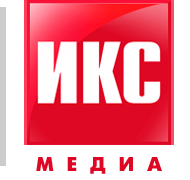





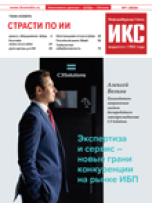

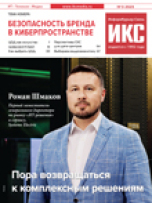
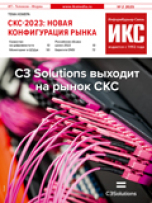


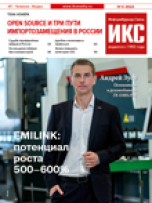

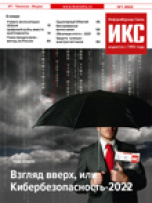
Оставить свой комментарий:
Комментарии по материалу
Данный материал еще не комментировался.